The New Motorola Moto X (2nd Gen) Review
by Joshua Ho on September 17, 2014 9:00 AM EST- Posted in
- Smartphones
- Motorola
- Android
- Mobile
Display
Without question, the display is one of the most important aspects of a smartphone. Unlike desktops and laptops, smartphones are primarily interacted with through their displays. Unfortunately, it’s hard to evaluate a display by eye as human vision is strongly dependent upon context. In order to control for this aspect, we turn to SpectraCal’s CalMAN 5 with a custom workflow in order to test smartphone displays. At any rate, let’s get into the data.
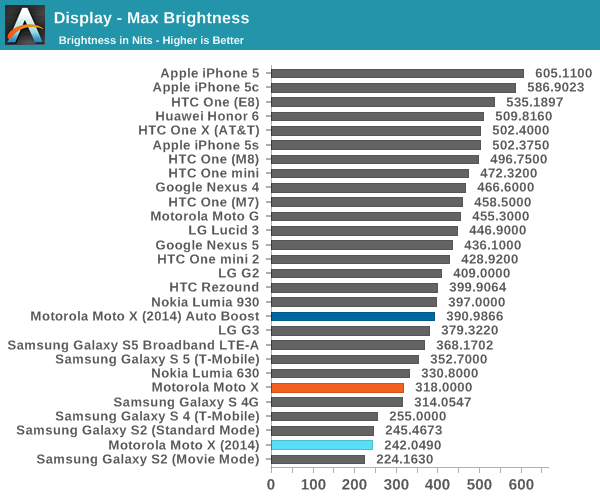
In the basics, the new Moto X is a bit on the low side. While AMOLED has traditionally struggled with luminance in situations such as the web browser and light-themed applications, Samsung’s Galaxy S5 and S5 LTE-A Broadband have shown that it’s possible to achieve levels of brightness approaching some of the brightest RGB-stripe LCDs. As the brightness of the Lumia 930 is about equal to the new Moto X, I suspect we're looking at the Galaxy S4/Note 3 generation of panels. This seems to be backed up by pictures of the subpixel layout seen below as the green subpixels seem to be noticeably larger when compared to the Galaxy S5's panel.
Contrast is still incredible, but I can still see the purple smearing effect that comes from unlit to lit pixels. I’m still unable to get a clear answer on why this is, but it’s likely that capacitance somewhere in the system is causing this issue in the form of RC delay. Whether this is a fixable issue is something I’m not aware of yet. The clear solution would be to set black to the lowest possible brightness a lit pixel can be, but this would make for worse contrast.

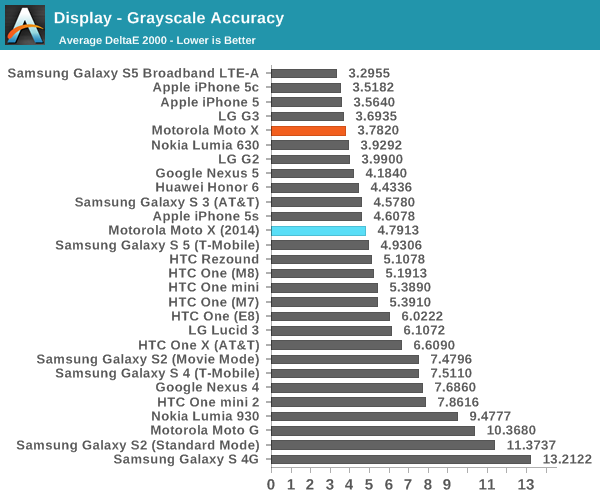
In grayscale, the new Moto X isn’t the best. We see that the display is just a bit too red, and that most of the luminance is coming from red and green. This makes sense from a power and display lifetime perspective though, as blue tends to have the least efficient emitter material in an AMOLED display. However, this translates to poor grayscale performance. The green tint tends to show itself in certain shades of grayscale as well.

In our saturation sweep, the new Moto X continues to be rather poor in its performance. While on Samsung phones it’s normal to see colors like this on the default display mode, there’s usually a mode that correctly constrains the display to sRGB which is the industry standard for displaying colors. There’s no such mode on the new Moto X, so the display significantly overshoots sRGB. This doesn’t bode well for the ColorChecker, which provides the most thorough look at color accuracy.
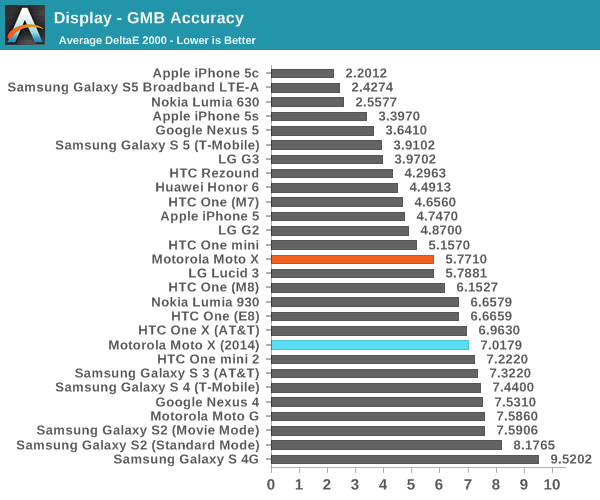
As predicted, the new Moto X does poorly in the ColorChecker. There’s really not much that the Moto X can accurately display in sRGB as just by pushing the gamut too far, even if there wasn’t saturation compression for some colors, the large gamut will cause distortion of all colors within the gamut triangle.
Unfortunately, it’s not clear where this lack of attention to color accuracy comes from. In discussions with Andrei it's clearly possible to calibrate the AMOLED panel from the GS4 quite accurately, and there's no real technical limitation for AMOLED to lack good calibration. However, judging by the relatively low peak brightness there are other issues as this could affect Motorola's performance in battery life tests. This seems to suggest that Motorola is unable to access the latest generation of AMOLED panels from Samsung Display.
This would be a rather startling thought, as it means that no matter what Motorola does to improve their implementation of Samsung’s AMOLED displays, they will always be behind the curve. If it becomes clear that Samsung’s AMOLED is the best display from a user-facing standpoint, every other OEM will face significant barriers in competition as they would be unable to access the latest generation AMOLED panels. The real solution here is for other display manufacturers such as LG, JDI, and AUO Optronics to catch up.
At any rate, the display of the new Moto X seems to be relatively poor compared to what we see in the Galaxy S5 LTE-A (and likely the Note 4), along with the iPhone 5s, Nexus 5, and One (M7). While it’s impossible to ignore the power advantage of AMOLED when implementing functions like Moto Display, the relatively low peak brightness and poor color accuracy are concerning.


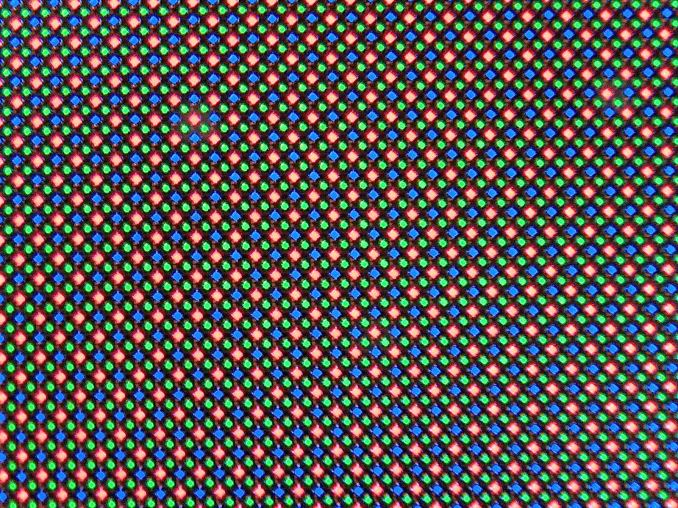

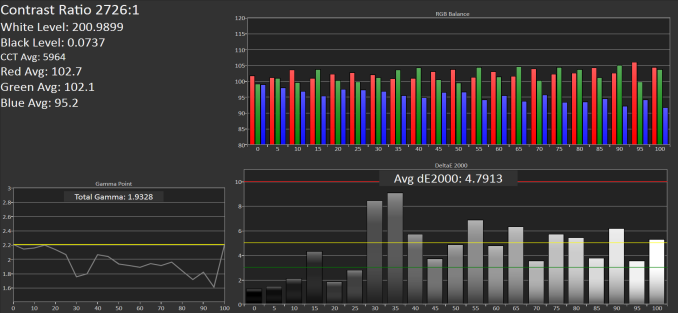

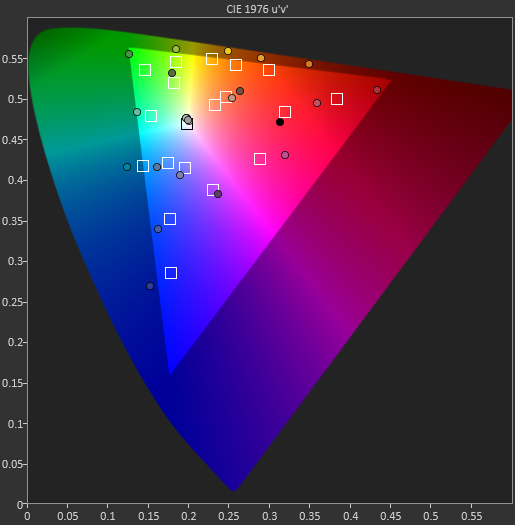








179 Comments
View All Comments
masimilianzo - Wednesday, September 17, 2014 - link
so basically we have to wait for the Note 4 gen display and a new stacked battery in order to have a truly compelling Moto X (hardware wise)olivaw - Wednesday, September 17, 2014 - link
I am wondering why the CPU and GPU benchmarks don't show the original Moto X, specially since its dual core was exhaustively analysed in the original review.ithehappy - Wednesday, September 17, 2014 - link
As an owner of the original X I was really looking forward to this one, just wished two things, a much improved camera and a great display, that's it. But both of them are below par and par with the competition.Looking elsewhere.......
Krysto - Wednesday, September 17, 2014 - link
> While this would be risky in terms of engineering, RCBC seems to give the benefits of clear pixels without the drawbacks that come with RGBC, although it's hard to tell whether this is really true without a shipping implementation.I knew this from last year when reading about Aptina's previous-gen RCBC sensor. It was obviously better than Omnision's RGBC. Motorola should've gone with Aptina for the rear camera, too, and market ClearPixel more heavily.
Alexvrb - Wednesday, September 17, 2014 - link
Interesting, I didn't realize Motorola made their own version of Glance. Anyway, seems like a good phone overall. Not exceptional in any one area maybe, but seems all-around solid and it's quite a bit cheaper than the big boy flagships.The only thing that really sucks is the lack of an SD card slot.
drew80 - Wednesday, September 17, 2014 - link
Was the test model perhaps a dud? Reviews on other sites have been much more favorable to screen properties, performance, and battery life. In addition, the glitches a rebooting were not mentioned in any other review. Just curious about that.2disbetter - Wednesday, September 17, 2014 - link
As someone who genuinely finds the moto x to be an absolutely amazing software and hardware integrated phone, I'm very happy with this newest generation x. I'm not crazy about a phone with amazing ergonomics getting bigger but I suppose it's inevitable now these days. If the Samsung didn't have a push button home button I think I'd get that. But as it is this is probably my next after my moto x now.soccerballtux - Thursday, September 18, 2014 - link
me tooerikiksaz - Wednesday, September 17, 2014 - link
I wonder if the capacitive controller could also be for the Moto logo on the back. I have a 2014 X with me here, and the M button is substantial, it really feels like there's supposed to be another function to it.JoshHo - Thursday, September 18, 2014 - link
The Moto logo on the back has nothing electronic in it, judging by teardowns.